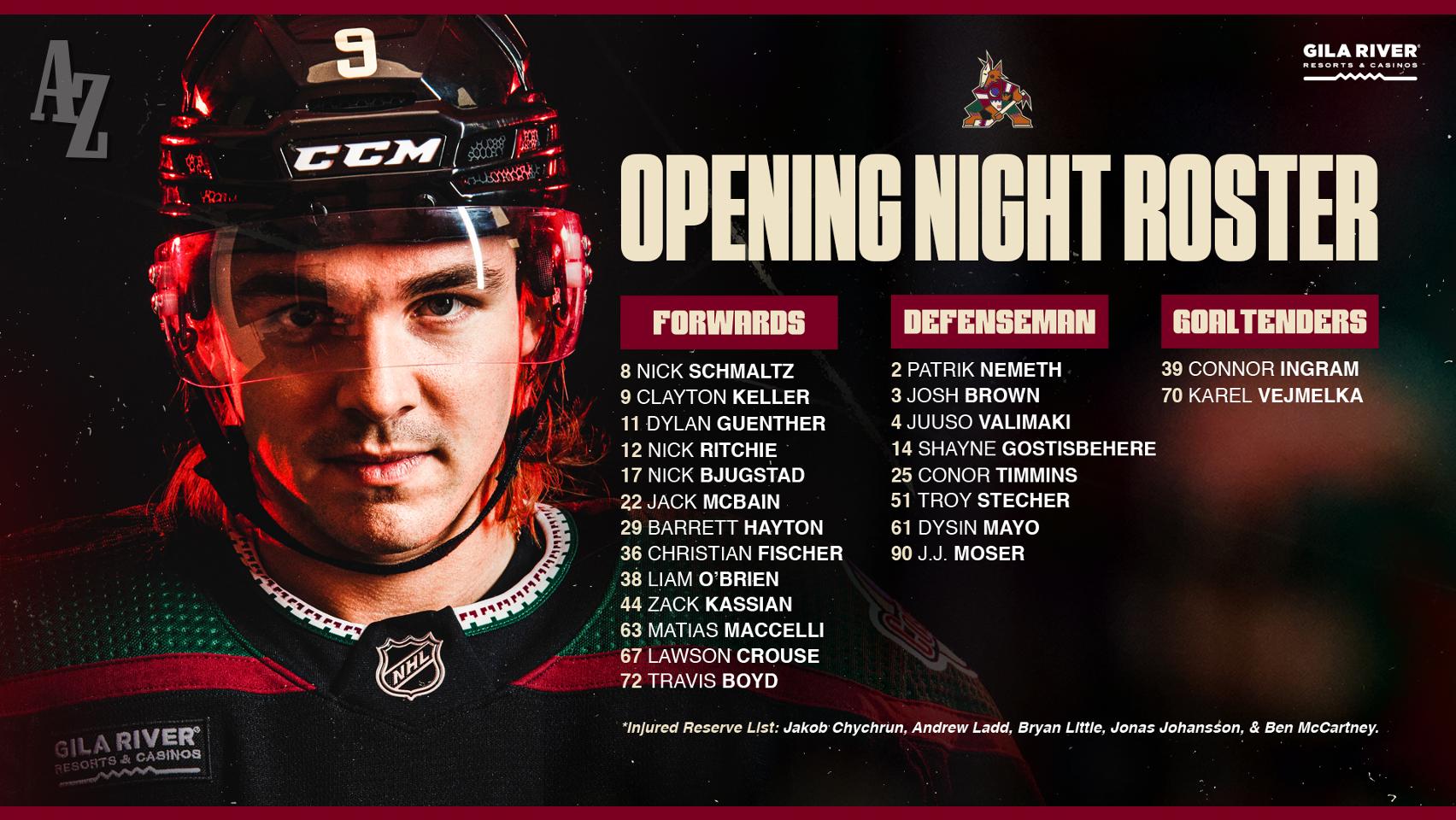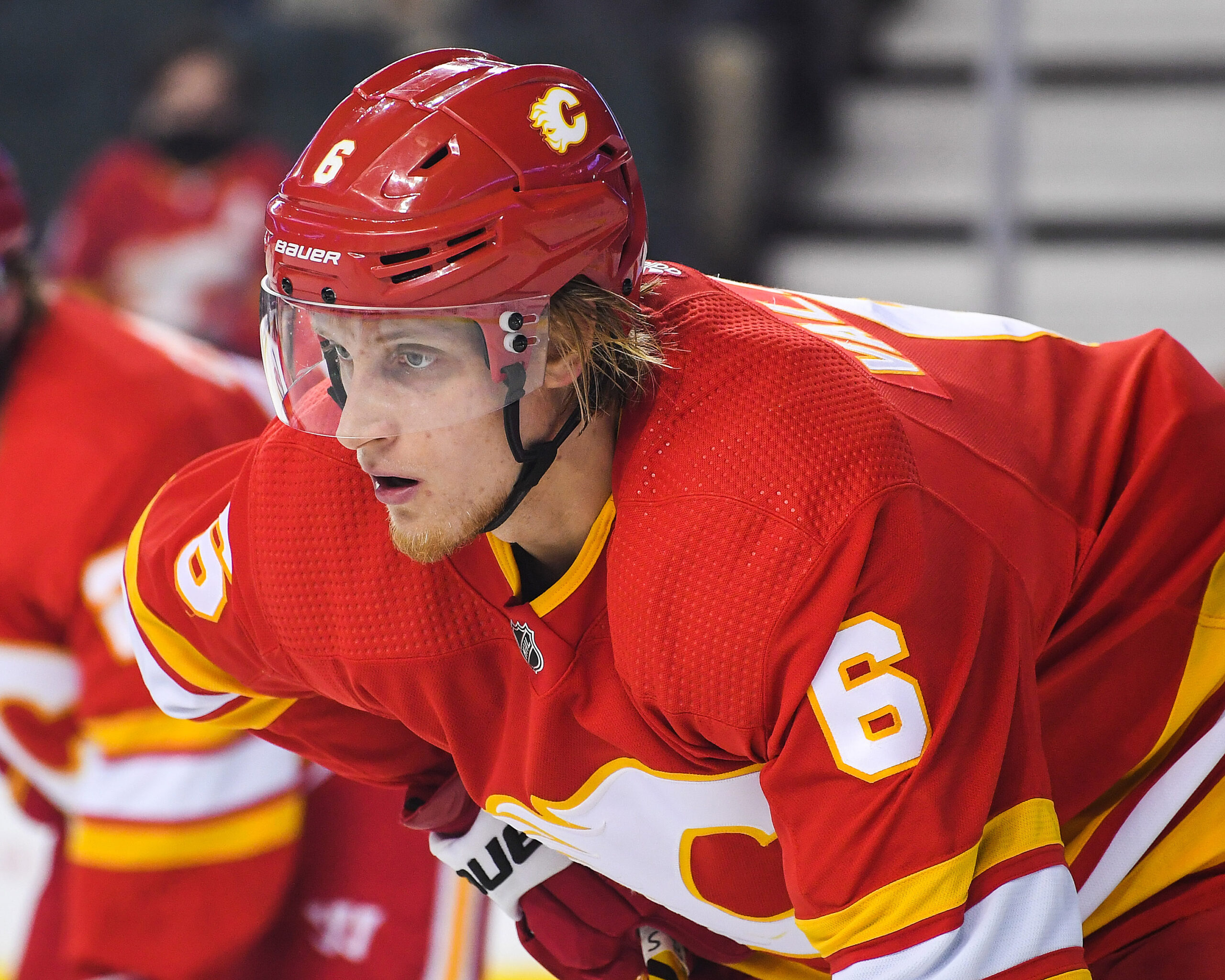© 2025 ALLCITY Network Inc.
All rights reserved.

The Coyotes opening night roster wasn’t officially released until after practice and media availability had ended on Monday at the Ice Den Scottsdale, but GM Bill Armstrong tipped his hand over the weekend with a flurry of moves that brought the roster to 27 players, with five of them expected to land on IR.
When the Coyotes claimed goalie Connor Ingram off of waivers from the Nashville Predators on Monday — a move that PHNX examined as a possibility two weeks ago — they had their 23-man roster.

That doesn’t mean that the roster is set in stone. Armstrong has already shown a willingness to add pieces midstream. He acquired Nick Ritchie in February of last season, he acquired Jack McBain and Nathan Smith a month later, he has been active on the waiver watch, and he believes that there are pieces with the team’s AHL affiliate in Tucson that could replace the current NHL pieces if injury or performance warrant it.
“There’s always options,” Armstrong said. “There’s always things that come up during the course of the season, but we want to take a look at some young kids and see what they can do so we’ll see where it goes from here.”
Here are some key takeaways from the release of the 2022-23 opening-night roster.
Guenther’s opportunity
Early in camp and the preseason, 2021 ninth overall pick Dylan Guenther looked out of place on NHL ice. As the preseason and camp progressed, however, he found a little more of a comfort zone.
The Coyotes elected to keep him on the opening-night roster, but that could be a temporary thing. A player on an entry-level contract (Guenther’s is three years in length) can skate in nine games before teams must decide whether to send him to the AHL or juniors and delay the start of the contract. Teams still can send a player down after game No. 10, but it burns the first year of their ELC.
Guenther isn’t AHL eligible because he is 19. Players drafted out of the CHL (OHL, WHL or QMJHL) must be 20 years old by Dec. 31 of that season to play in the AHL.
Guenther didn’t exactly rip it up in the preseason. He had a goal and two assists, but he had 14 shots on goal (third on the team) and he averaged 15:32 of ice time (fifth among forwards).
“He’s got skill,” Armstrong said. “You watch him out there. He thinks like an NHL player. His biggest thing will be dealing a little bit with the speed, but also the strength of the NHL. And just because you score in the first 10 games doesn’t mean you’re scoring in the next 10. The NHL gets better all the time, all season.”
I suspect that Guenther will need to blow the Coyotes away in his trial run to earn a permanent spot, rather than head back to Edmonton of the WHL. He still needs physical maturation and the Coyotes imagined heyday is still so far off that it’s hard to imagine a scenario under which they’d be willing to burn the first year of his ELC and the invaluable cost control that it provides in a league where so many teams are bumping up against the cap.

Coyotes goalie shuffle
The development path for goaltenders is tricky to predict. Many of them mature later than forwards or defensemen; some figure it out quickly.
Connor Ingram fell into the first group, bouncing around the Tampa Bay Lightning system for three years after his selection in the third round in 2016. When you toss in some undiagnosed (for a time) mental health issues, which Adam Vingan detailed superbly in this piece for The Athletic, you’ve got the makings of a late bloomer.
In the past two seasons that he played in the AHL, sandwiched around time off to get his OCD issues sorted out, Ingram, 25, was one of the best goalies in the minor leagues. He posted a 1.92 goals against average and a .933 save percentage with Milwaukee in 2019-20. He followed that with a 2.70 GAA and a .915 save percentage in 2021-22.
“Even his regular-season NHL games last year, which look like bad numbers on the stat sheet (3.71 GAA, .897 SP), were actually slightly above average, relative to shot quality in those games,” said Kevin Woodley, who published InGoal Magazine, a must-read outlet for all things related to goaltending. “His expected save percentage was .869 so he was plus-0.01, which is the same adjusted save percentage that [Toronto’s] Jack Campbell had last season, obviously with a much bigger sample. The kid can play. The question now is, can he manage the mental stress behind a bad team?”
For the Coyotes, Ingram was worth the shot during a season in which they expect to be bad anyway. They have the cap room and roster spots to spare, and GM Bill Armstrong can afford to experiment and maybe find some diamonds in the rough that can stick with the team as it transitions into a more competitive bunch.
“We got a lot of scouting reports on him from our guys covering the area there and they said he’s been the best American League goalie two years running,” said Armstrong, adding that Ingram will join the team on Tuesday. “Everybody loved his potential and upside. For us, it’s a chance to push forward with a guy that’s in that wheelhouse with his age.
“We talked internally about the Corey Crawfords and the Jordan Binningtons going on waivers and also guys like Darcy Kuemper who came on when they were a little older. Some goaltenders just get it a little bit later. They figure it out. We’ve kind of targeted guys around that age with potential and he looks like one of those guys that you could hit on so we took a chance on him on waivers, brought him in and we’ll see what he can do.”
The Coyotes assigned Jon Gillies to the Tucson Roadrunners on Monday, so for the immediate future, Ingram will battle Jonas Johansson for the backup spot behind Karel Vejmelka. Johansson is currently on IR after suffering an injury in the third period of his only preseason start after the Coyotes claimed him; a 4-3 loss at Vegas in which he stopped 24 of 28 shots.
Armstrong said that Johansson should be ready to rejoin the team in the next couple of days, at which point the Coyotes will have to make decisions on a number of fronts. They already have Ivan Prosvetov, Gillies and David Tendeck in Tucson. They could elect to keep three goalies for a while with the NHL team while they sort out the pecking order, and there is also their ECHL affiliate in Atlanta, which would be able to absorb at least one goalie.
“There’s a lot of options here so we’ll play that out over the next couple of days,” Armstrong said.

Lines and goalies and pairs, oh my
Don’t hold me to this, but based on what coach André Tourigny said on Monday, and what I saw on the ice, here is my projected opening-night lineup. By the way, I asked Tourigny specifically if Clayton Keller and Nick Schmaltz would play on their off wings. He said they would not.
The expectation is still that Keller will be ready for opening night, but that decision may come down to the night before the game, or the day of the game in Pittsburgh on Thursday.
One note on the defense pairs. The staff was impressed by JJ Moser in camp and in the preseason. He took another step forward.
| Left wing | Center | Right wing |
| Clayton Keller | Travis Boyd | Nick Schmaltz |
| Nick Ritchie | Nick Bjugstad | Matias Maccelli |
| Lawson Crouse | Barrett Hayton | Christian Fischer |
| Liam O’Brien | Jack McBain | Zack Kassian |
| Left defense | Right defense |
| JJ Moser | Troy Stecher |
| Shayne Gostisbehere | Conor Timmins |
| Juuso Välimäki | Dysin Mayo |
| Goalies |
| Karel Vejmelka |
| Connor Ingram |
| Extras |
| Dylan Guenther |
| Josh Brown |
| Patrik Nemeth |
Coyotes injury updates
Aside from Johansson, forward Ben McCartney (season-opening IR) is considered day-to-day. “He should be fine in the next few days. We’re just taking precautions and getting him in shape,” Armstrong said.
There is no timetable yet for when defenseman Jakob Chychrun (wrist, IR) will be ready. Forwards Andrew Ladd (knee, IR) and Bryan Little (ear/head, IR) are expected to miss the entire season.
Top photo of Dylan Guenther via Getty Images
Follow Craig Morgan on Twitter
Comments
Share your thoughts
Join the conversation



